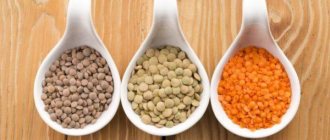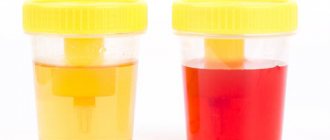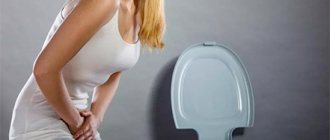Harmful oxalates
Crystals of oxalate salts are hard, insoluble and have an angular shape with many sharp protrusions.
As a result of metabolic disorders in the human body, which can be congenital or acquired, a pathological condition such as oxalaturia occurs, that is, increased formation in the kidneys of crystals consisting of oxalate salts acids and their excretion in urine. With oxalaturia, up to one gram of oxalate crystals or their conglomerates are released per day.
Crystals of oxalate salts are hard, insoluble and have an angular shape with many sharp protrusions. Because of this feature, they easily damage the mucous membrane of the renal tubules, pelvis and ureters, which causes inflammation of the internal renal membranes. Oxalates are also prone to the formation of large crystal compounds, as a result of which, under favorable conditions (inflammatory process in the kidneys), oxalate sand and stones quickly form.
With oxalaturia, a pathology that affects both adults and children (with congenital metabolic disorders), the following characteristic symptoms are noted:
- pain in the abdomen and lumbar region;
- pain and burning along the urethra when urinating;
- the appearance of bloody inclusions in the urine (hematuria);
- fast fatiguability.
When inflammation occurs in the renal pelvis during oxalaturia, the likelihood of stone formation sharply increases, which can only be removed surgically.
Foods and diets after kidney transplant
Important! Oxalate stones are very hard, so subjecting them to ultrasonic or laser crushing is very problematic.
Promotes the formation of compounds of oxalic acid and calcium (this mineral is mainly found in oxalate salts) and acidification of urine. In a normal, especially alkaline, environment, the formation of oxalate compounds is sharply reduced. This once again confirms that one of the main reasons for the occurrence of oxalaturia is a violation of metabolic processes and acid-base balance, therefore the diet for this disease involves not only the exclusion of foods high in oxalic acid, but also such dishes that contribute to a shift in the environment to the acidic side .
Read more about how oxalates appear in urine.
Diet for kidney stones
Encyclopedia of Health / Encyclopedia of Proper Nutrition
Are kidney stones found? Get ready for the fact that from now on you will have to sit down at the table at least 5 times a day, drink up to 1.5–2 liters of water, eat small portions and always warm up food. Which one depends on the composition of the stones.
TIME TO WASH THE STONES
The doctor will tell you to crush or remove stones. He will also prescribe the appropriate medications. And they will definitely recommend a diet.
OXALATE STONES
They do not tolerate foods rich in oxalic acid.
Exclude: sorrel, spinach, figs, cocoa, green tea, chocolate, strong fish and meat broths, alcohol, spicy seasonings and snacks, fried meat.
Limit : potatoes, salt, carrots, onions, tomatoes, cherries.
Add to the menu: wheat bran and sprouted wheat, apples, pears, grapes, red currants, seafood (except fish). But don't be alarmed. The list of permitted products is not so small: cabbage (Brussels sprouts, cabbage, cauliflower), cucumbers, zucchini, pumpkin, watermelons and melons, peas, all types of cereals, white bread, vegetable oil (preferably olive and flaxseed!), fruit - apricots, bananas. As well as dairy products and meat, which are best consumed in the first half of the day and boiled.
Herbal medicine - it is very useful to drink herbal decoctions: black currant leaf, lingonberry, St. John's wort, horsetail, corn silk.
| UNIVERSAL DETERGENT Watermelon has a good diuretic effect. In the summer, when it is sold on every corner, you need to regularly include watermelon in your diet, and once a week have a fasting day - eat 1.5–2 kg of watermelon pulp. |
Mineral water - Essentuki-4, Novaya, Smirnovskaya, Slavyanskaya, Maikopskaya.
URATE STONES
It can be dissolved by using an alkalizing diet.
Limit to a minimum: meat, poultry, offal (kidneys, liver), cheese, eggs and fish. Boil soups mainly vegetarian or cooked in a second broth (drain the first after 5-10 minutes of boiling).
Increase to the maximum: consumption of vegetables, fruits, juices.
Add to the menu : dairy products and “non-fish” seafood (shrimp, squid, mussels, oysters) to compensate for the lack of protein.
Herbal medicine - decoctions of diuretic herbs: half-pol, bearberry, cornflower flowers, tansy.
Mineral water – Borjomi, Moskovskaya, Novaya.
PHOSPHATE STONES
They need “acidification”. After consulting with a doctor and ruling out the possibility of diseases of the parathyroid gland and colitis, you can establish a constant diet.
Strictly limit : milk, dairy products and plant foods.
Leave on the menu: meat and fish products, any cereals, pasta and legume dishes, which you can eat more of.
Herbal medicine – madder, herbal preparations “Marelin” and “Fitolysin”.
Mineral water – Narzan, Martialnaya.
Ratio of endogenous and exogenous oxalates
Oxalic acid, which causes kidney problems, is only partially obtained from food
Oxalic acid, which causes kidney problems, is only partially obtained from food. About half of this substance contained in the body is formed as a result of biochemical reactions occurring in the liver. Another 30% of oxalic acid is released during the metabolism of ascorbic and glyoxalic acids. About 5% of oxalates in the blood are formed as a result of the vital activity of intestinal microflora, and only 15% comes from outside with food.
But clarification is necessary here. About 10 times more oxalic acid enters the intestines with food compared to the amount that is absorbed and enters the blood. But in the lumen of the intestines, most (up to 90%) of the acid reacts with minerals (calcium, magnesium) and is excreted in the feces. But this is true if there are no intestinal diseases and a sufficient amount of these macroelements is supplied with food. With chronic inflammation of the intestinal wall, dysbiosis and insufficient intake of calcium from food, the absorption of oxalic acid into the blood can increase up to 30%. The oxalate content also increases in diseases accompanied by significant metabolic disorders (diabetes mellitus, hepatitis, obesity, hyperparathyroidism).
Although exogenous oxalic acid is a relatively small percentage compared to the substance produced internally, when oxaluria occurs, it is important to keep oxalate levels to a minimum by limiting the consumption of foods rich in these dangerous substances.
Oxalate nephrolithiasis. Patient Management Options
21.11.2019
20503
0
| M.Yu. Prosyannikov Candidate of Medical Sciences, Head of the Department of Urolithiasis, Research Institute of Urology and Interventional Radiology named after. ON THE. Lopatkina - branch of the National Medical Research Center of the Ministry of Health of the Russian Federation (Moscow) |
In the program “An Hour with a Leading Urologist,” the studio guest was Candidate of Medical Sciences, Head of the Department of Urolithiasis at the Research Institute of Urology and Interventional Radiology named after. ON THE. Lopatkina Mikhail Yurievich Prosyannikov. He spoke in detail about the mechanisms of calcium oxalate urolithiasis and the available methods of conservative influence on this process.
The majority of all stones observed in patients with urolithiasis (KSD) are calcium oxalate. At the same time, as Mikhail Yuryevich noted, new drugs are now appearing that can help in the treatment of just such urolithiasis, but they can only be useful with a good understanding of how stones are formed and what mechanisms need to be affected to prevent stone formation.
According to an analysis of 12,992 studies conducted by the Research Institute of Urology conducted from 1990 to 2015, oxalate urolithiasis accounts for about 64% in men and 55.1% in women in the structure of urolithiasis. World statistics show approximately the same indicators: 50–70% of the total incidence of stones [1].
Mechanism of oxalate formation
As Mikhail Yuryevich recalled, depending on the chemical structure, two forms of calcium oxalate stones are distinguished: weddellites and wewellites (calcium oxalate dihydrate and monohydrate, respectively). From a clinical point of view, this is not of great importance, since both compounds cannot be dissolved by any means today. As soon as calcium combines with oxalic acid, a precipitate occurs. When combined with, say, citric acid, no precipitate is formed. This is the basis of one of the promising methods for the prevention of calcium oxalate urolithiasis: by increasing the proportion of citrates in the urine, the likelihood of calcium oxalate stones formation decreases.
Calcium oxalates may be present in the urine as crystals in patients without stones. They are visible on sediment microscopy.
For adequate kidney function, there must be a difference in urine pH in the pelvis and in the loop of Henle by approximately 2 units. The main risk factor for oxalate nephrolithiasis is a decrease in urine pH. At a certain stage, the calcium phosphate base prolapses into the cavity of the renal pelvicalyceal system. Thus, calcium oxalate stone grows on a calcium phosphate foundation.
Fig.1. Modern ideas about the pathogenesis of stone formation in urolithiasis, the formation of Randall’s plaque [6]
Up to 57% of people who do not have urolithiasis may still have Randall's plaques, whitish spots that indicate stone formation [2]. It is important to remember that KSD is a polyetiological disease, and for the formation of a stone, a confluence of several factors is necessary. Not in every case all the necessary factors are present immediately, but still the processes of stone formation are observed in many people
It is extremely difficult to influence Randall's plaques, primarily due to the lack of effectiveness criteria. At the same time, today it is possible to influence the concentration of those elements from which stones are formed.
“Swing” pH and stone formation
Salt crystals are poorly soluble in the urine of a person with a tendency to form stones, in particular due to the effect of pH on the excretion of the main stone-forming substances. The amount of excretion of calcium, uric acid, phosphate and magnesium is maximum at pH 5.6–5.8. In a healthy body, the balance of inhibitors and promoters does not allow stones to be deposited, despite excretion, but the most effective way to prevent stone formation is by adjusting the pH level.
A shift in urine pH to the acidic side (below 5.9–6) leads to an increase in the proportion of wavellite and oxalate component in urinary stones. To the alkaline side (from 5.1–5.3 to 6.1–6.9) - to the accumulation of a share of weddellite in stones. In general, a decrease in urine pH (less than 5.4) appears to play a more significant role in enhancing oxalate lithogenesis than calcium excretion.
Factors influencing calcium oxalate urolithiasis
Employees of the Research Institute of Urology, based on a sample of 708 people, analyzed what factors influence calcium oxalate urolithiasis. It was possible to identify 6 components:
- uricuria (increased level of uric acid excretion in urine) > 4.6 mM/day;
- magnesiumuria > 5.7 mM/day;
- calciuria > 6.2 mM/day;
- phosphaturia 30.9–36.9 mM/day;
- Urine pH is around 5.5;
- BMI 24.9–27.1 kg/m2.
To prevent calcium oxalate urolithiasis, it is necessary to influence, if possible, all these factors [3].
One of the confirmations of the influence of urine pH on the formation of calcium oxalate stones is also that the pH of morning urine in patients with uric acid urolithiasis is stable and is in the range of 5.0–6.0 (in the vast majority of cases - 5.0–5.5 ) [4]. When normalizing the pH level of urine, for example, using citrate mixtures, in 89.4% of cases, the disappearance of oxalate crystalluria is observed.
Effective and ineffective methods of prevention
Mikhail Yuryevich also emphasized the ineffectiveness of the approach in which, to treat ICD, patients are advised to reduce their dietary calcium intake - in this case, calcium begins to be washed out of the bones [5]. The normal level of calcium in the blood is 2.2–2.5 mmol/l.
Regarding the metabolism of oxalic acid, according to various clinical recommendations, the daily intake for patients with urolithiasis is from 50 to 150 mg of oxalates. Most of them are excreted in feces, about 20% remains. Another small part is synthesized in the liver. As a result, about 35 mg is excreted in urine[6]
Oxalates in the body are synthesized from amino acids - in particular glycine, glucose and ascorbic acid. Hyperoxaluria is divided into primary (types 1 and 2) and secondary (absorptive). Primary can be observed in the case of a mutation in the AGXT gene, leading to systemic damage to the body by oxalates. For this reason, liver transplants with normal AGXT enzymes are already being performed.
Additionally, the AGXT enzyme is activated by vitamin B6 intake. Therefore, it can be prescribed to patients with oxalate urolithiasis to reduce the concentration of oxalate in the urine. If primary hyperoxaluria is suspected, a genetic analysis is performed: the AGXT gene mutation is determined. Polymorphism of the ORAI1 (rs7135617), CASR (rs2202127), VDR and KL genes is also determined.
The risk of secondary hyperoxaluria increases with inflammatory diseases of the gastrointestinal tract, after resection of large sections of intestine, pancreatitis, and gallstones. Microorganisms also make a significant contribution: urease-producing bacteria (Proteus, Pseudomonas and Klebsiella) and oxalate-degrading bacteria (Oxalobacter formigenes, Lactobacter). To counteract them, correction of the intestinal microflora with eradication of urease-producing bacteria is required.
Patient Nutrition Assessment
For any type of stone, you should first evaluate the patient’s diet and understand what he eats ends up in the blood. Then the moment of transition of substances from the blood into the urine is monitored and the type of stone is determined. Diet assessment is carried out using the Eating Pattern Questionnaire (EPQ). Monitoring of urine pH, biochemical analysis of blood and urine for lithogenic disorders, and determination of the chemical composition of the stone are also carried out. There is evidence that 2 consecutive 24-hour urine collections 4–7 days apart can detect metabolic disorders in 80% of cases [7].
Dietary prerequisites for calcium oxalate urolithiasis are excessive intake of calcium, oxalates, purines and uric acid, plus insufficient intake of potassium, magnesium and vitamin B6. Thus, to prevent stone formation, it is necessary to normalize calcium intake to the level of 1000–1200 mg, reduce salt intake and restore the amount of vitamin B6. To normalize the level of oxalates in the urine, you need to limit the consumption of potatoes, spinach and chocolate, and also include more polyunsaturated fatty acids (salmon, tuna, mackerel, sardines, nuts, fish oil) in your diet. Adjusting urine pH levels can be achieved by alkalizing or acidifying the diet [8].
To normalize the level of citrates in urine, it is necessary to limit the volume of artificial carbonated drinks in the diet. In addition, natural, unpackaged juices of lemon/lime, orange and melon are rich in citrates.
According to the current recommendations of the European Association of Urology, when the urine calcium level is 5–8 mmol/day, citrate mixtures of 9–12 g/day and sodium bicarbonate 1.5 g per day are prescribed. When calcium levels are above 8 mmol/day, hypothiazide 25–50 mg/day, chlorthalidone 25 mg/day, indapamide 2.5 mg/day are prescribed.
In case of primary hyperoxaluria (excretion of oxalates > 1 mmol/day), genetic testing is first necessary to accurately identify the cause. Pyroxidine may be prescribed at a dose of 5 mg/kg per day (maximum up to 20 mg/kg per day). In case of secondary, intestinal (oxalate excretion 0.5–1 mmol/day), excessive consumption of oxalates is possible or gastrointestinal diseases are present: malabsorption syndrome, colitis, conditions after intestinal anastomoses and chronic diarrhea. The use of calcium and magnesium is prescribed, and the intestinal microbiota is also normalized.
For hyperuricuria (uric acid > 4 mmol/day), citrate mixtures 9–12 g/day or sodium bicarbonate 1.5 g 3 times/day are prescribed. In addition, allopurinol can be prescribed at 100 mg, 1 tablet/day and up to 300 mg/day in case of a significant increase in uric acid levels. It is important to monitor the predominance of vegetable protein in the patient’s diet.
Drugs for the correction of oxalaturia
To correct oxalaturia, the drug Oxalite can be used. It contains extracts of Fucus vesiculosus, Phyllanthus niruri and Desmodium styraxolifolia. At the Research Institute of Urology, a study of its effectiveness was conducted over 3 months with the participation of 30 patients. The biochemistry of the blood and 24-hour urine of patients was assessed for lithogenic disorders with the connection of remote monitoring.
Patients aged 18–66 years were divided into two equal groups of 15 people. The first received only dietary recommendations. The second one, besides them, was prescribed Oxalit for a period of 3 months.
At the first appointment of patients, the biochemistry of 24-hour urine was assessed: calcium, magnesium, oxalates, citrates, diuresis. At week 4, blood biochemistry was also assessed.
There were no significant changes observed in the diet group.
In the diet group with additional intake of Oxalit, a decrease in the average level of oxalates was noted from 0.23 to 0.11, as well as an increase in the amount of magnesium from 2.21 to 4.44.
In total, 30 patients performed more than 2,400 urine tests using a remote monitoring device - the portable ETTA AMP-01 analyzer. Analyzes performed using such a “home” urine analyzer are comparable to analyzes performed on stationary equipment, since both devices operate on the same test strips [9].
The relative density of urine was slightly increased in both groups. In addition, during observation, pH decreased slightly in both groups. As an important factor, Mikhail Yuryevich noted that the administration of Oxalit statically significantly reduced the number of red blood cells in the urine of patients.
Based on the results of the study, the authors came to the conclusion that when taking Oxalit, the level of oxalates in daily urine decreases by 2.1 times (p < 0.05), renal excretion of magnesium increases by 2 times (p < 0.05), and the degree of leukocyturia decreases and the level of protein in the urine (p < 0.05), as well as the level of erythrocyturia decreases 2.9 times to subnormal values (p < 0.05).
As Mikhail Yuryevich emphasized, until now there were no means in the arsenal of urologists that could influence the factors of calcium oxalate urolithiasis with such a degree of effectiveness.
Sources:
- Yee V. Wong et al., Int J Endo, 2015
- Stoller ML et al., J Urol, 1996
- Golovanov S. A. et al., Ex and wedge Urol, 2018
- Konstantinova O. V., Yanenko E. K., Urology, 2015
- Nagaraja Rao P. et al., Ur Tract Stone Disease, 2011
- Shestaev A. Yu., Ex and wedge Urol, 2013
- Bek-Jensen H. et al., Eur Urol, 1998 8. Manissorn J. et al., Sci Rep, 2021 9. Shaderkin I. A. et al., Ex and clin urol, 2015
Material prepared by Yu.G. Boldyreva
The article was published in the journal Urology Digest No. 5-2019
Topics and tags
Urolithiasis disease
Comments
To post comments you must log in or register
Sample menu
One-day menu for an adult
| Eating | Dishes |
| Breakfast | Millet porridge with milk; boiled egg, dried fruit compote, bread with butter |
| Dinner | Cabbage soup with mushrooms; pasta, chicken cutlets or baked fish, vegetable salad from cabbage with cucumber, compote or clean drinking water |
| Afternoon snack | Cottage cheese with banana, weak herbal tea |
| Dinner | Vegetable salad with cabbage and carrots, brown rice, turkey meat in creamy sauce |
| Late dinner | Kefir or fermented baked milk |
One-day menu for a child
| Eating | Dishes |
| Breakfast | Millet porridge with milk or traditional milk soup, white bread with butter, weak tea or dried apple compote |
| Dinner | Turkey broth soup with vegetables and noodles, cabbage salad with sweet apple, steamed chicken soufflé, compote or clean drinking water |
| Afternoon snack | Cottage cheese with banana or fermented baked milk |
| Dinner | Cauliflower casserole, cutlet (beef + pork), weak herbal tea or pure water |
| Late dinner | Milk or drinking yogurt, 2 cookies |
The menus of children and pregnant women are almost the same and should contain foods rich in magnesium and vitamins B and A. During pregnancy, the amount of water consumed may be limited in the presence of edema and hypertension.
In addition to diet, some patients use some herbs: bearberry, rose hips, mint, birch buds, sage. Herbal medicine is not indicated for children under 12 years of age and women during pregnancy. Its effectiveness in adults has also not been proven.
Drug therapy is used. An active lifestyle, giving up bad habits, avoiding stress, and controlling chronic diseases are effective.
Source
General rules of nutrition for urolithiasis
The choice of the appropriate table and the optimal diet directly depends on what stones were found in the patient during the examination. Despite this, there are several general rules for patients with urolithiasis:
- drinking plenty of fluids during the day to reduce the concentration of urine and speed up the excretion of salts along with it;
- limiting the intake of substances that contribute to the formation of stones and the progression of urolithiasis;
- overeating should be avoided to prevent metabolic disorders;
- following the menu in accordance with the doctor’s prescriptions.
Table of oxalate content in foods
Below are the foods richest in oxalates. Here is a kind of table consisting of the name of the product, as well as the content of oxalates in its 100 g serving (mg): spinach - 750, beet greens - 610, okra - 146, parsley - 100, leeks - 89, greens - 74.
For the vast majority of people who do not have the above diseases, you can ignore the oxalate content of food. In most cases, foods high in oxalates (such as spinach) can be eaten raw or cooked daily. Oxalate-rich foods are also typically very rich in vitamins, minerals, and antioxidants. Therefore, they should be consumed if you are healthy and partially excluded if you have a disease (consume in minimal quantities - no more than 50 mg per day).









